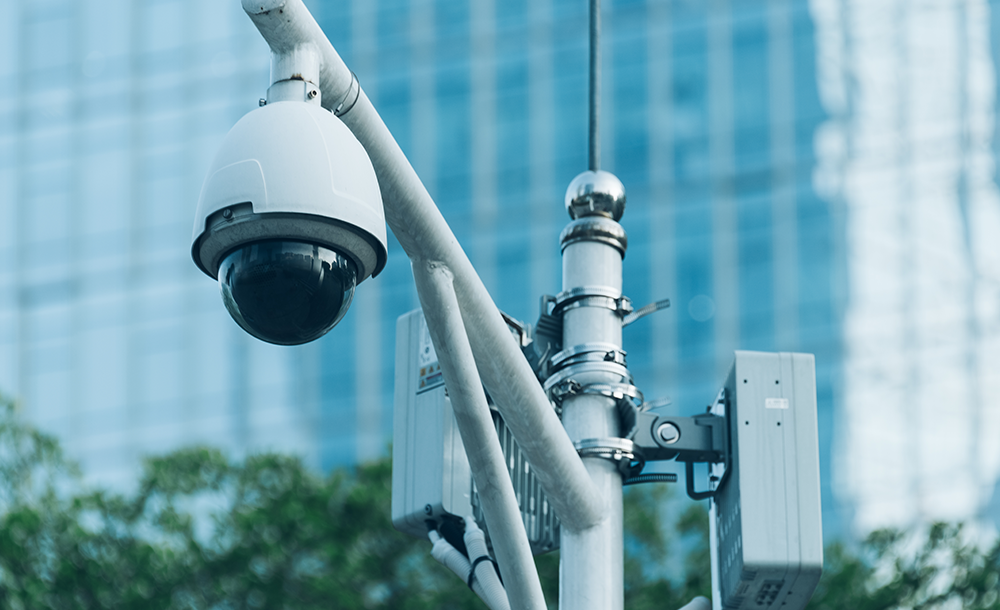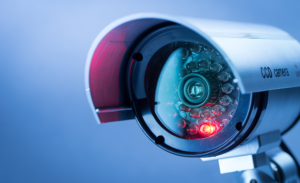How CCTVs Work as a Crime Prevention Tool
 February 25, 2021 Blog 0 Comment
February 25, 2021 Blog 0 Comment Closed-circuit television cameras (CCTV) aren’t new. In fact, these devices are used as a part of a security system for the past 80 years. CCTVs have long been associated with public safety and security thanks to their ability to record and show footage in real-time. Through these devices, local police authorities can prevent crimes from happening and solve criminal cases with material evidence.
This article will cover how CCTV cameras can function as part of a crime prevention measure. We’ll go over what makes CCTVs a good deterrent tool and their effectiveness when used in certain settings.
The role of CCTV cameras in preventing crime
In the security space, CCTVs are considered to be an effective tool in reducing crime rates around cities and suburbs. CCTV cameras achieve the following:
- Offer a surveillance function that can help deter burglars from committing crimes in the area that’s monitored.
- Reinforces public safety which in turn leads to increased use of space. This discourages criminals from committing unlawful acts as there are more potential witnesses.
- The presence of CCTVs may act as a reminder to the public to take other security measures like locking their vehicles and securing their valuables.
How CCTVs are used in certain situations
- Studies have shown that CCTV cameras work to deter criminals in a variety of situations. Out of 22 evaluations, 11 of them successfully reduced crime rates, 5 of them were unsuccessful, and the other 5 had zero impact on the crime rates. (Welsh & Farrington 2002).
- Evidence gathered from the UK reveals that using CCTV cameras reduces the risk of motor vehicle theft and other forms of acquisitive crime. Evidence also reveals that CCTVs work best in small and enclosed locations (Gill & Spriggs 2005).
- Research indicates that CCTV cameras are most effective when an active police has interest in providing surveillance information regarding the setup of the cameras and being involved in monitoring the footage from the CCTVs.
- Furthermore, CCTV cameras have found to be even more effective when paired with adequate street lighting. Combining these elements have resulted in fewer crimes like vehicle theft and burglary (Welsh & Farrington 2004).
The cost of installing CCTV cameras
CCTV cameras have an upfront installation cost and an ongoing operational cost. While the initial expenses can be quite expensive, the benefits far outweigh the costs, especially when calculated on a long-term basis. Domestic CCTV installations usually cost around $900 and above and the price depends on the complexity of the package.
It’s best to look around and compare prices from different security system providers so you can find the best deals that fit your budget and requirements.
CCTV use in
Australia
There are a wide range of applications for CCTV cameras and almost every business establishment in Australia uses them. Even domestic applications like rental homes and elderly care homes use CCTV cameras to provide an additional layer of security for their clients.
With the rate of uptake growing by the year, CCTVs are considered to be an essential component of every security system out there. A recent survey of all local councils around Australia found that 9% of local councils use CCTV cameras. Around 60% of cases their CCTV systems were installed in the past 6 years. Lastly, 2% of councils reported that they were considering installing CCTV system for security purposes.
Local government managed schemes have been categorised according to location and use of cameras
(ARTD 2001):
- street/park/plaza surveillance
- council facilities (sports facilities, libraries etc)
- council administration buildings only
- portable cameras deployed at problem locations for limited time
- dummy cameras.
With the nine percent of local councils in Australia that have CCTV (IRIS 2005):
- 32% have them in open air shopping malls
- 54% have them in city centres other than malls, and
- 48% have cameras on council property.
It is also common for the public transport system to use CCTV. For example in NSW, in 2001
(ARTD 2001):
- State rail had cameras on over 300 stations, including 5,500 cameras, 19 control centres and more
- than 100 staff operating the system.
- There was extensive CCTV coverage on public buses, ferry wharves, private buses and many
- taxis.
Guidelines for CCTV cameras
Australian standards for CCTV have been developed by Standards Australia and was publicly revealed back in 2006. There are British codes of practice that contain much of the technical information that needs to be considered and understood to determine whether a CCTV system will work in local applications.
New South Wales has guidelines for CCTV operation in public places. Published in 2000 and endorsed at the national police commissioners’ conference in 1999, these guidelines are subject to regular review
The guidelines outline principles under the following headings:
- Ownership of schemes and accompanying responsibilities
- Community consultation
- Setting clear objectives
- Integrated approaches to crime prevention
- Police involvement in public area CCTV schemes
- Managing and operating schemes
- Evaluation
- Complaints
- Monitoring and auditing
CCTV cameras have been proven to be a useful deterrent against burglars and criminals. Whether you’re looking to have a comprehensive system installed in your home or business, you want to work with the right company for the job.
As one of the leaders in CCTV camera installations in Perth, Smart Security prides itself on its wide range of security products paired with excellent customer service. For all of your CCTV needs, contact us today to learn more.


